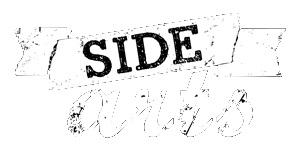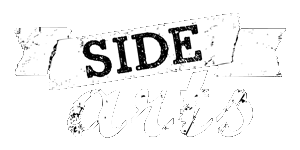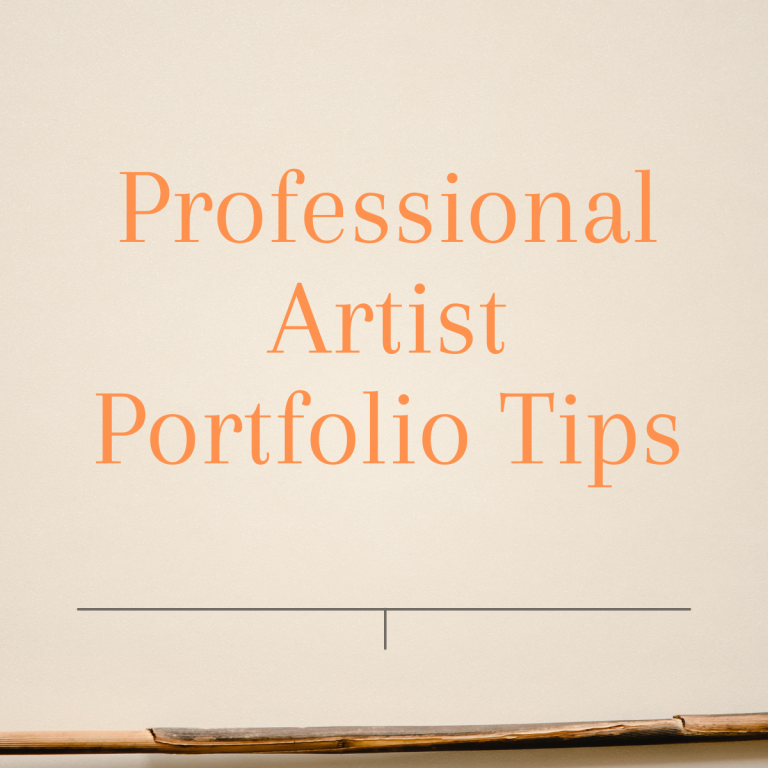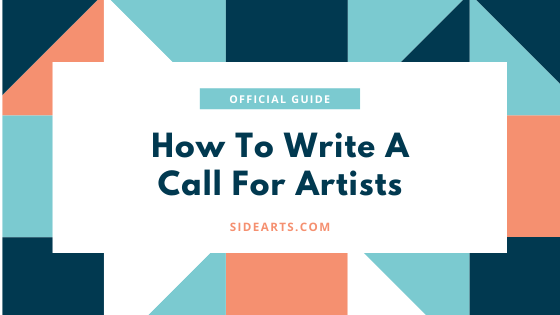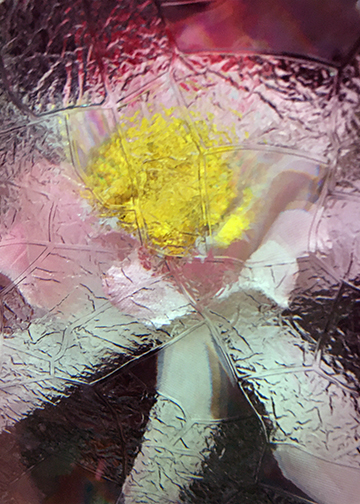A well-crafted professional artist portfolio is a powerful tool that can help you showcase your talent, attract potential clients, and open doors to various opportunities in the art world. Whether you’re a painter, sculptor, illustrator, or any other type of artist, having a professional portfolio is essential for establishing your presence and credibility. In this blog post, we will explore some valuable tips to help you build a compelling artist portfolio that effectively highlights your skills and artistic vision.
- Define your artistic focus: Before diving into creating your portfolio, take some time to define your artistic focus. Determine the style, medium, or themes that represent your unique voice as an artist. This clarity will help you curate your portfolio with a consistent and coherent body of work. Whether you specialize in abstract art, portraiture, or mixed media, having a clear focus will make your portfolio more appealing and memorable.
- Quality over quantity: When it comes to selecting artwork for your portfolio, remember that quality always trumps quantity. Focus on showcasing your best and most recent work rather than including every piece you’ve ever created. Be selective and choose artworks that demonstrate your technical skills, creativity, and artistic growth. A portfolio with a concise selection of high-quality pieces will make a stronger impression on viewers.
- Organize your portfolio: Organize your portfolio in a logical and intuitive manner. Start with a captivating cover page or introduction that gives viewers a glimpse into your artistic journey. Follow it with a well-structured sequence of artwork that flows smoothly. Consider grouping your pieces by theme, medium, or chronology, depending on what makes the most sense for your work. Ensure that the presentation is visually appealing, consistent, and easy to navigate.
- Show your range: While having a defined artistic focus is important, it’s also beneficial to showcase your versatility as an artist. Include a variety of pieces that highlight different techniques, subject matters, or styles. This demonstrates your ability to adapt and experiment, making you more attractive to potential clients or collaborators who might have diverse artistic needs.
- Provide context and details: For each artwork, provide context and details that enhance the viewer’s understanding and appreciation. Include titles, dimensions, materials used, and any relevant descriptions or inspirations. Consider adding brief artist statements or captions that give insight into your creative process, intentions, or the emotions you aim to evoke. These additional details help create a connection between the viewer and your artwork.
- Presentation matters: While the focus is on the artwork itself, the presentation of your portfolio should not be overlooked. Invest in high-quality photographs or scans of your work to ensure accurate representation. Pay attention to lighting, composition, and color accuracy to capture the essence of each piece. Additionally, consider designing a professional and visually appealing portfolio layout that complements your artwork.
- Keep it updated: Regularly update your portfolio to reflect your growth and progress as an artist. Remove older pieces that no longer align with your current style or level of expertise. Replace them with newer works that demonstrate your artistic evolution. Keeping your portfolio fresh and up to date shows that you’re actively engaged in your craft and allows viewers to witness your artistic journey.
Conclusion
Building a professional artist portfolio is a crucial step towards establishing your presence in the art world. By defining your artistic focus, curating high-quality artwork, organizing your portfolio effectively, showcasing your range, providing context, paying attention to presentation, and keeping it updated, you’ll create a powerful tool that accurately represents your skills and artistic vision. Remember, your portfolio should be a reflection of your passion and talent, so invest time and effort into making it as impactful as possible.
Next Step
Are you ready to showcase your artwork? Apply to become represented by Side Arts. Limited capacity and by jury review. Click here to learn more.
...
In the vast world of visual arts, finding your niche is crucial for success and recognition. As an artist, defining your niche allows you to stand out from the crowd, develop a unique style, attract your target audience, and create a strong personal brand. In this blog post, we will explore the importance of defining your niche as a visual artist and provide practical tips to help you identify and cultivate your artistic identity.
- Embrace Your Passion: Passion is the driving force behind every successful artist. Take the time to reflect on what truly excites you and fuels your creativity. Are you drawn to landscapes, portraiture, abstract art, or perhaps mixed media? Identify the subjects and mediums that ignite your artistic spark and make them a core part of your niche.
- Study Art Movements and Styles: Immersing yourself in the study of art history and different art movements can provide valuable insights into various styles and techniques. Explore different genres, from impressionism to cubism, surrealism to pop art. Understanding the evolution of art will help you identify elements that resonate with your vision and assist in the formation of your unique style.
- Self-Reflection and Experimentation: Self-reflection plays a vital role in discovering your artistic niche. Engage in introspection and evaluate your previous works. Look for recurring themes, techniques, or subject matters that emerge from your portfolio. Experiment with different mediums, styles, and subject matters to discover what feels most authentic to you.
- Find Your Voice: Your artistic voice is the essence of your work. It reflects your perspective, experiences, and emotions. Developing a distinct artistic voice is essential for creating a recognizable brand. Explore your inner thoughts, beliefs, and personal experiences to infuse your work with a unique narrative. Strive to communicate your message through your art in a way that is authentic to you.
- Research and Identify Your Target Audience: Understanding your target audience is crucial for successful art marketing. Research and identify the demographics, interests, and preferences of the people who resonate with your artistic style. Tailor your artistic output and marketing efforts to appeal to this specific group, building a loyal following and potential customers.
- Consistency and Specialization: Consistency is key in establishing your niche. Continuously produce artwork that aligns with your chosen style and subject matter. This helps build recognition and loyalty among your audience. Consider specializing in a specific subset of your niche to further stand out. For example, if you primarily focus on wildlife, you might specialize in painting endangered species.
- Collaborate and Network: Engaging with other artists, galleries, and art communities is a great way to gain exposure and expand your network. Collaborations and joint exhibitions can introduce you to new audiences and open up opportunities for growth. Attend art events, join online artist communities, and actively seek connections within the art world.
Conclusion: Defining your niche as a visual artist is a powerful step towards establishing your artistic identity and achieving success in the competitive art industry. Embrace your passion, experiment, find your voice, understand your audience, and strive for consistency. Remember, your niche is a reflection of your unique perspective, and by embracing it, you can create art that resonates with others and helps you thrive in your artistic journey.
Next step: Get certified and help marketing your artwork. Click here to learn more.
...
Side Arts provides promotion content marketing for a range of call for artists providers and business types. The most common include art organizations, galleries, event promoters, private businesses, local governments, educational institutes, and museums.
Call For Artists Providers
In order of frequency, these are the types of organizations which provide opportunities for visual artists and crafters:
- Galleries – Offer 4-10 exhibition opportunities per year. These are themed calls which can range from colors, shapes, social issues, medium, and styles. The benefit of showing with a gallery is being able to take advantage of their relationships with collectors.
- Non-profit art organizations – Offer 2-3 exhibition or competitions per year. The non-profits are typically local arts councils or focused on a specific medium, such as wood, ceramics, or fabric. Exhibition themes revolve around local history, public figures, and community affairs.
- Event promoters – Manage annual art fairs. These pay-to-participate events usually include the opportunity for juried prizes. Participation to be juried often costs extra.
- Residencies – Destinations for inspired art making which may include travel expenses, room and board, studio space, and guided support and experiences. Residencies may be juried or paid. 1) Juried: There are no costs except application fees. 2) Paid: The participant assumes all costs. These provide different levels of services on a fee-based and availability basis.
- Government institutions – Opportunities provided by city government or state arts commissions. These occur irregularly and are dependent on funding. Funding may come from the city, state, federal, or percent-for-art (one-half of one percent of construction cost for art projects). These are requests for proposals for public works – murals, sculptures, traffic box wraps, storm drain painting, bus stop installations, bicycle rack artwork, public bench artwork, and other installations.
- Publications – Magazines, both online and in print. Usually pay-to-participate and ongoing based on publication frequency.
- Studio tours – Community events where artist studios are open to the public. Run by a local arts council or an independent non-profit organization. Pay-to-participate. Although traffic is not guaranteed, online and print promotion may be offered. The primary benefit is having a reason to clean up and organize the studio annually.
- Higher education institutions – These are often residencies which take advantage of a broad range of facilities and services available at the institution as well as dormitory living space.
- Private businesses – Commissions from private businesses looking for branding and marketing support – typically murals or 2D artwork in private offices, hotels, and other real estate.
Call For Artists Benefits
Providing each of the above has positive and negative aspects. Make sure the fee structure, commissions, and terms of engagement are clearly defined. Know your legal rights. Give quantitative and qualitative data to back up why someone should participate.
...
Deja 42 Art Gallery announces a call for artists for those who would like to present their work in their upcoming March exhibition, Spring Forward. Pieces should represent the changing of the season and the stormy power and beauty of Nature as we head into Spring. Creators working in all media (painting, photography, sculpture, drawing, mixed media, ceramics, textile) are welcome. All media will receive due and equitable consideration.
Click here for the application / registration
Deadline: 2 Mar 2020
A $20 fee is required for up to three different artworks submitted. Detailed images of submitted works may be included. It is preferable that artworks are for sale. Include contact information, artwork title, media, and dimensions with your submission.
Accepted artists will be notified by Wednesday, March 4th, 2020. Gallery-ready pieces should be delivered to the Gallery no later than Wednesday, March 11th, 2020. Deja 42 Art Gallery retains a 40% commission on all sold artwork. Opening reception is Saturday, March 14th, 2020.
Spring Forward Call For Artists Benefits
Chosen artists for Spring Forward will be showcased in a gallery space located in the vibrant and eclectic East Passyunk Square area of South Philadelphia. Artists will have the opportunity to not only sell their work at a commission, but also sell prints and smaller pieces in a storefront retail space. Deja 42 Art Gallery promotes featured artists through social media such as Instagram, Facebook, and Twitter as well as the gallery’s website. Showing artists receive 60% of their retail ask. Openings are every second Saturday of the month. Openings draw a big crowd in an intimate space. This offers promotion, exposure, and open discussion among artists and potential buyers.
About Deja 42 Art Gallery
Deja 42 Art Gallery is a unique Fine arts gallery and store of amazing objects. The gallery opened their doors at the beginning of April in the beautiful and lively area of East Passyunk in South Philadelphia. They have garnered much interest from both locals and visitors. Deja 42 goes beyond the traditional gallery space. The gallery offers artists and artisans the opportunity to showcase their work without the exclusivity of representation.
They are open to all forms of media and welcome sincerely both emerging and established artists. Deja 42 is a proud member of the East Passyunk Business Improvement District. The district provides exposure and promotion for businesses in the East Passyunk Avenue area of metropolitan Philadelphia.
For more information, contact deja42artgallery@gmail.com.
